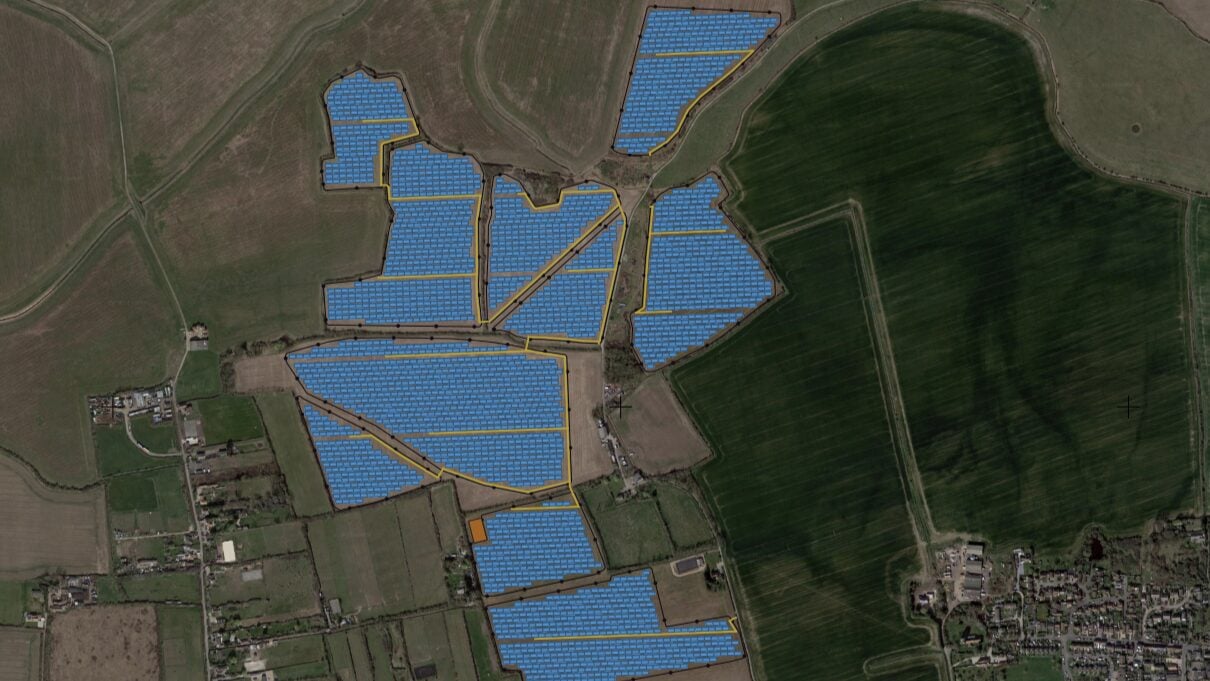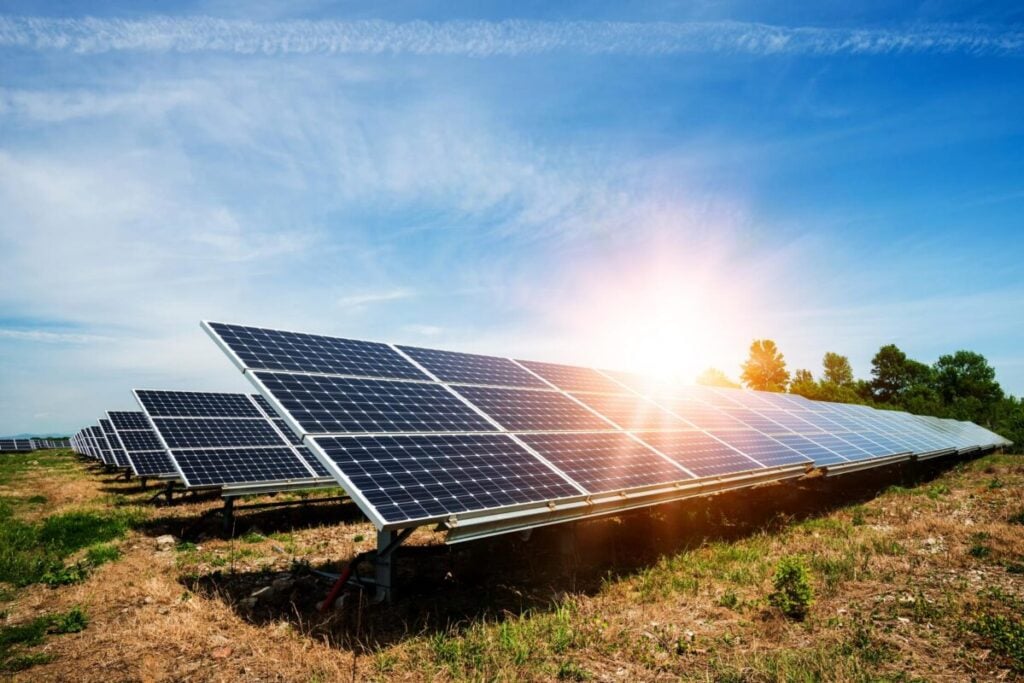8 basic types of common solar mount system
A reasonable form of solar mount system can improve the system's ability to resist wind and snow load. The rational use of the bearing characteristics of the solar support system can further optimize its size parameters, save materials, and contribute to further reducing the cost of photovoltaic systems.
 The loads acting on the foundation of the photovoltaic module bracket mainly include: the self-weight (constant load) of the bracket and the photovoltaic module, wind load, snow load, temperature load and earthquake load. Among them, the main control effect is wind load, so the foundation design should ensure the stability of the foundation under the action of wind load. Under the action of wind load, the foundation may be pulled up, fractured and other damage phenomena, and the foundation design should be able to ensure that the acting force No damage occurs.
The loads acting on the foundation of the photovoltaic module bracket mainly include: the self-weight (constant load) of the bracket and the photovoltaic module, wind load, snow load, temperature load and earthquake load. Among them, the main control effect is wind load, so the foundation design should ensure the stability of the foundation under the action of wind load. Under the action of wind load, the foundation may be pulled up, fractured and other damage phenomena, and the foundation design should be able to ensure that the acting force No damage occurs.
Let's take a look at the types of ground-based solar mount foundations and flat roof solar mount foundations and their characteristics.
Ground Solar Mounting Foundation
NO.1 Bored pile foundation:
It is more convenient to form holes, and the top elevation of the foundation can be adjusted according to the terrain, the top elevation is easy to control, the amount of concrete reinforcement is small, the amount of excavation is small, the construction is fast, and the damage to the original vegetation is small. However, there are concrete holes and pouring on site, which are suitable for general fill, clay, silt, sand, etc.
NO.2 Steel spiral foundation:
It is convenient to form holes, the top elevation can be adjusted according to the terrain, and it is not affected by groundwater. It can be constructed as usual under winter climate conditions. The construction is fast, the elevation adjustment is flexible, and the damage to the natural environment is small. Small, no field leveling required. Suitable for deserts, grasslands, tidal flats, next door, frozen soil, etc. However, the steel used is larger, and it is not suitable for strong corrosive foundations and rock foundations.
NO.3 Independent foundation:
It has the strongest water load resistance, flood resistance and wind resistance. The amount of reinforced concrete required is the largest, the labor is large, the amount of earthwork excavation and backfill is large, the construction period is long, and the damage to the environment is large. It has been rarely used in photovoltaic projects.
NO.4 Reinforced concrete strip foundation:
This type of foundation form is mostly used in flat uniaxial tracking solar supports with poor foundation bearing capacity, in areas with relatively flat sites and low groundwater levels, and with high requirements for uneven settlement.
NO.5 Precast pile foundation:
Prestressed concrete pipe piles with a diameter of about 300mm or square piles with a cross-sectional size of about 200*200 are driven into the soil, and steel plates or bolts are reserved on the top to connect the front and rear columns of the upper bracket. The depth is generally less than 3 meters, and the construction is relatively simple and fast. .
NO.6 Bored pile foundation:
The cost is low, but the requirements for the soil layer are high. It is suitable for silt with a certain density or plastic and hard plastic silty clay. It is not suitable for loose sandy soil, hard pebbles or crushed soil. Stone may have the problem that it is not easy to form pores.
NO.7 Steel screw pile foundation:
Using special machinery to screw it into the soil, the construction speed is fast, no site leveling is required, no earthwork and no concrete, and the vegetation in the field is protected to the greatest extent.
Flat Roof Solar Mount Foundation
▲Cement counterweight method: It is a common installation method to pour cement piers on the cement roof. It has the advantages of being stable and does not damage the waterproofing of the roof.
▲ Prefabricated cement counterweight: Compared with the production of cement piers, it is less time-consuming and saves cement embedded parts.

Let's take a look at the types of ground-based solar mount foundations and flat roof solar mount foundations and their characteristics.
Ground Solar Mounting Foundation
NO.1 Bored pile foundation:
It is more convenient to form holes, and the top elevation of the foundation can be adjusted according to the terrain, the top elevation is easy to control, the amount of concrete reinforcement is small, the amount of excavation is small, the construction is fast, and the damage to the original vegetation is small. However, there are concrete holes and pouring on site, which are suitable for general fill, clay, silt, sand, etc.
NO.2 Steel spiral foundation:
It is convenient to form holes, the top elevation can be adjusted according to the terrain, and it is not affected by groundwater. It can be constructed as usual under winter climate conditions. The construction is fast, the elevation adjustment is flexible, and the damage to the natural environment is small. Small, no field leveling required. Suitable for deserts, grasslands, tidal flats, next door, frozen soil, etc. However, the steel used is larger, and it is not suitable for strong corrosive foundations and rock foundations.
NO.3 Independent foundation:
It has the strongest water load resistance, flood resistance and wind resistance. The amount of reinforced concrete required is the largest, the labor is large, the amount of earthwork excavation and backfill is large, the construction period is long, and the damage to the environment is large. It has been rarely used in photovoltaic projects.
NO.4 Reinforced concrete strip foundation:
This type of foundation form is mostly used in flat uniaxial tracking solar supports with poor foundation bearing capacity, in areas with relatively flat sites and low groundwater levels, and with high requirements for uneven settlement.
NO.5 Precast pile foundation:
Prestressed concrete pipe piles with a diameter of about 300mm or square piles with a cross-sectional size of about 200*200 are driven into the soil, and steel plates or bolts are reserved on the top to connect the front and rear columns of the upper bracket. The depth is generally less than 3 meters, and the construction is relatively simple and fast. .
NO.6 Bored pile foundation:
The cost is low, but the requirements for the soil layer are high. It is suitable for silt with a certain density or plastic and hard plastic silty clay. It is not suitable for loose sandy soil, hard pebbles or crushed soil. Stone may have the problem that it is not easy to form pores.
NO.7 Steel screw pile foundation:
Using special machinery to screw it into the soil, the construction speed is fast, no site leveling is required, no earthwork and no concrete, and the vegetation in the field is protected to the greatest extent.
Flat Roof Solar Mount Foundation
▲Cement counterweight method: It is a common installation method to pour cement piers on the cement roof. It has the advantages of being stable and does not damage the waterproofing of the roof.
▲ Prefabricated cement counterweight: Compared with the production of cement piers, it is less time-consuming and saves cement embedded parts.



